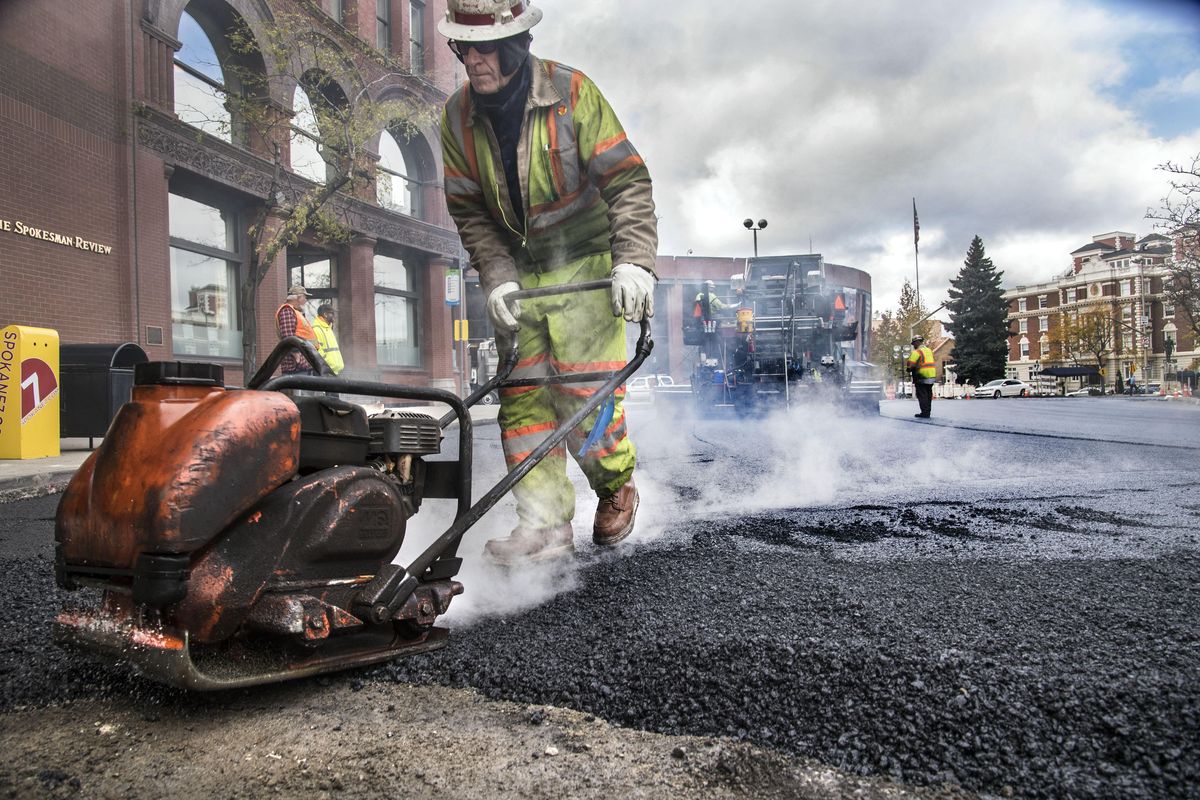Break in weather allows for asphalt paving on big downtown project

A break in October’s rainy weather allowed construction crews the chance to lay down a significant portion of asphalt pavement Wednesday on Monroe and Lincoln streets downtown.
Crews showed up at 5 a.m. so they could get key spots finished by 7 a.m.
As the day wore on, the paving brought the monthslong project closer to a goal of getting the streets back into relatively normal operation before winter weather arrives.
Final work, including the top layer of asphalt, will be postponed until spring.
For the past few weeks, workers were finishing up utility work underground; pouring curbs and sidewalks; laying down two base layers of crushed rock and gravel; and getting the rock compacted with rollers.
Rain last Friday canceled a planned paving session, workers said.
The rescheduled work Wednesday included filling in gaps on the east sides of Lincoln and Monroe, including the intersections at Riverside, Sprague and First avenues.
The goal has been to get two of three planned layers of asphalt down before winter cold shuts down work.
Temporary lane striping is also being applied.
The top 2-inch layer cannot be paved unless temperatures are 45 degrees and rising, said Scott Foster of T. LaRiviere Equipment and Excavation Inc., of Athol, the general contractor.
The window for favorable weather is closing quickly.
Drivers and pedestrians have been negotiating ripped-up streets and four-way stop signs for months, and businesses have complained about the project discouraging customers.
Workers said they plan to install traffic lights before the winter shutdown, which is likely to happen in middle to late November, depending on weather.
Street lighting at intersections will be in place, but some of the lighting at the middle of the blocks may have to wait until the project is completed next spring, workers said.
Temporary intersection lights powered by generators will no longer be needed, they said.
The complexity of the project – multiple utility updates, lighting and other electrical connections – caused the protracted work, city officials said.
“It’s not just ripping up pavement and putting it back,” said city spokeswoman Julie Happy.